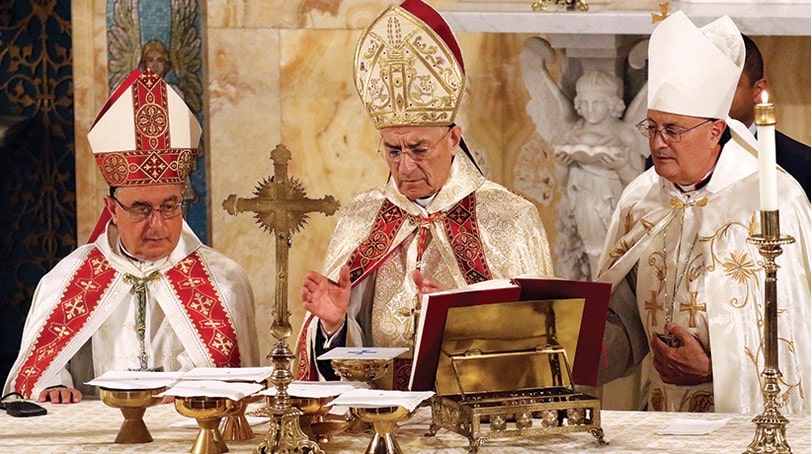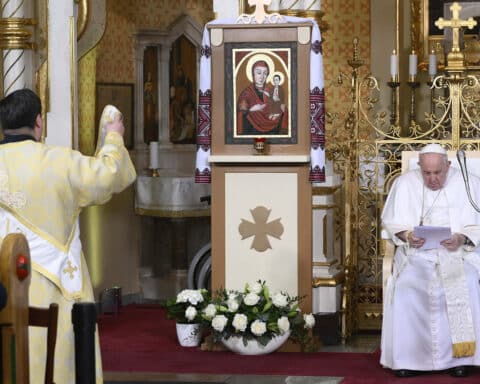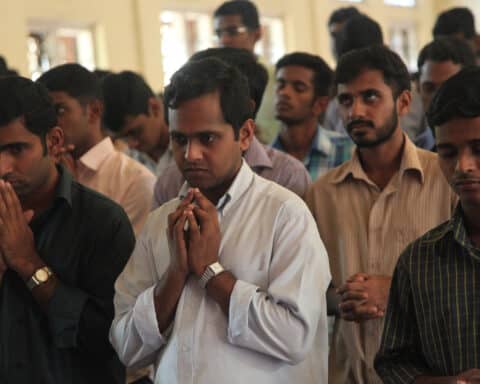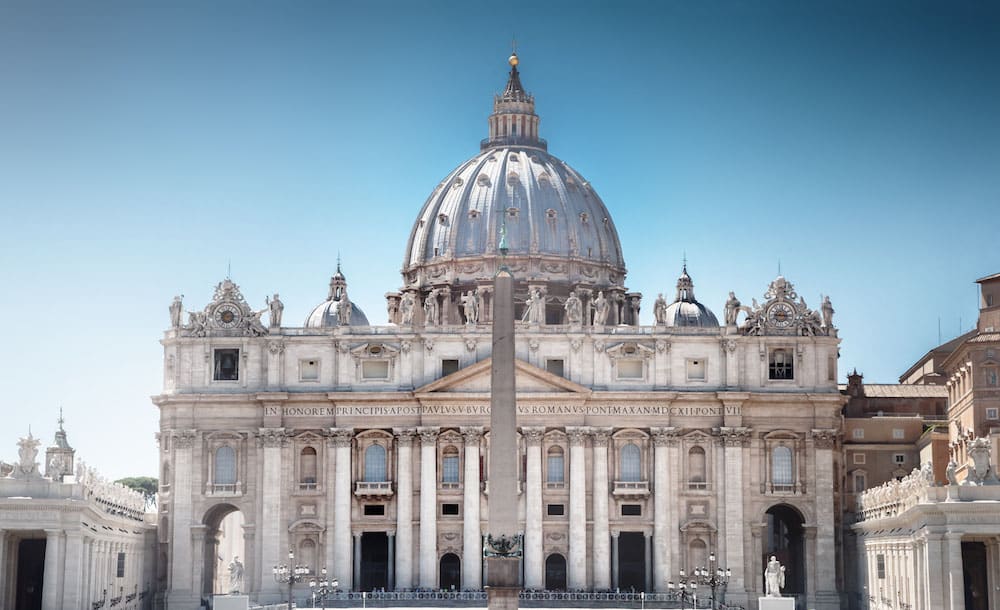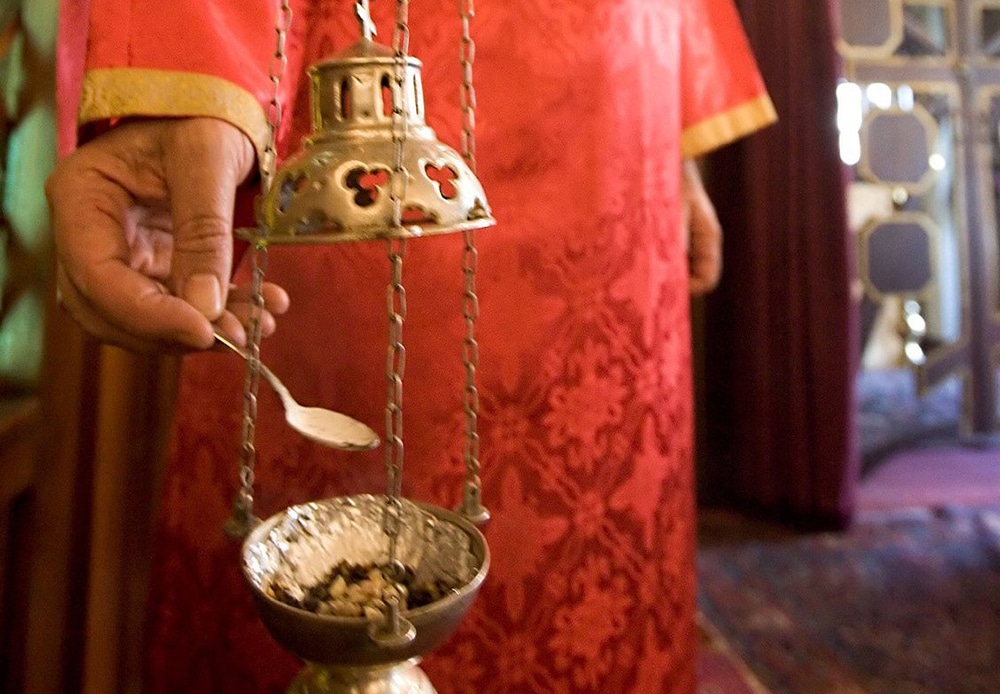A priest stands at the altar, adorned in an array of beautiful vestments, clutching a crucifix, surrounded by icons, incense and bells. In Syriac Aramaic, the everyday language of Jesus and his apostles, he chants the words of consecration: “This is my Body,” “This is my Blood.” This is the Holy Sacrifice of the Mass, or Holy Qurbana, offered in a Maronite Catholic parish.
The Maronite Church is an Eastern Catholic sui iuris particular church in full communion with the pope. This means that in one sense it is independent, with a patriarch as its head, but still under the authority of the Holy Father. The official name is the Syriac Maronite Church of Antioch, and it traces its roots to the ancient city where the followers of Jesus were first called Christians, and from where St. Paul started on his missionary journeys. The Church takes its name from St. Maron (sometimes rendered as Maroun), a fourth-century saint in what is modern-day Turkey.
The head of the Maronite Church is known as a patriarch. Since 2011, this has been Cardinal Bechara Boutros Rai. The headquarters are located in Bkerke, north of Beirut in Lebanon. There are large Maronite communities in several places around the world. In fact, approximately two-thirds of the Church’s members are located in the diaspora in Europe, the Americas, Australia and Africa.
Establishing communities
In the United States, the Church is divided into two eparchies, or dioceses. Initially a single eparchy based in Detroit, Michigan, it transferred headquarters in 1977 to Brooklyn and was renamed the Maronite Catholic Eparchy of Saint Maron of Brooklyn. This eparchy covers 16 states all along the Atlantic coast, with 44 parishes and missions and about 33,000 Maronite Catholics.
The other was established out of 34 states from the Pacific up to the eastern seaboard in 1994: the Maronite Catholic Eparchy of Our Lady of Lebanon of Los Angeles. Since 2001, the headquarters has been in St. Louis, Missouri. In this diocese there are 38 parishes and missions totaling about 46,000 Maronite Catholics.
It is difficult to identify when the first Maronites came to the United States, but it is certain that in the 1880s and 1890s there was a large influx of Maronite immigrants from Lebanon and Syria. Prior to this, they were mainly emigrating to Egypt and other countries in the Middle East and Mediterranean. A lack of economic opportunities and living space were major factors for emigration, but religious issues may also have played a role. At this time, Lebanon and Syria remained a part of the Ottoman Empire, and the Muslim population continued to grow, which made Christians increasingly unwelcome in the region — sometimes explicitly so.
When the first Maronites were emigrating to the United States, they were forced to attend Roman Catholic churches, as there were no Maronite priests to serve them — let alone Maronite parishes. As their religious heritage was so important to them, they quickly began petitioning the patriarch to send priests to the United States. Many missionaries were sent, and they helped to begin founding parishes around the country.
In the lead-up to the First World War, from 1900-14, the population of Lebanon decreased by one-fourth due to emigration. The mass emigration continued after the war, bringing a large number of Maronites to the United States.
Early Maronite immigrants sought work, and settled down wherever they could find it. Often this was in factories making steel, automobiles and the like. As a result, Maronite communities quickly developed in Pittsburgh; Detroit; Youngstown, Ohio; and other places around the country.
Retaining tradition
From their first days in the United States, Maronites faced a number of problems. Chief among them was a lack of priests of their own rite; they were often seen as very “other” by many in this country. One thing that set Maronites apart from other Catholics was married clergy. Like other Eastern rites, as well as Orthodox Christians, Maronites allow married men to be ordained priests, but the Vatican impoised a ban on the practice outside the traditional territories of Eastern rites from the 1920s until 2014. The first married man ordained a Maronite priest in the United States was Father Wissam Akiki in 2014.
The Maronite tradition was not just a religious heritage for many of the immigrants in the first few generations. It was a lodestar and safeguard of cultural and social traditions, as well. Many of the immigrants maintained their knowledge and use of Arabic, and some even held onto Syriac, the liturgical language of the Maronites.
While there are many who still wish to maintain ties to this ancient tradition — liturgically and culturally — a large number of American Maronites have abandoned the Maronite tradition almost entirely due to the lack of Maronite churches in their region, or marrying non-Maronites.
The question of assimilation into American society would drive many to Roman Catholic churches during the first few generations of immigrants. However, in recent years, almost the opposite seems to be happening: Non-Maronites are joining the Maronite Church due to the rich and beautiful liturgy, the obvious ties with antiquity and the cultural traditions.
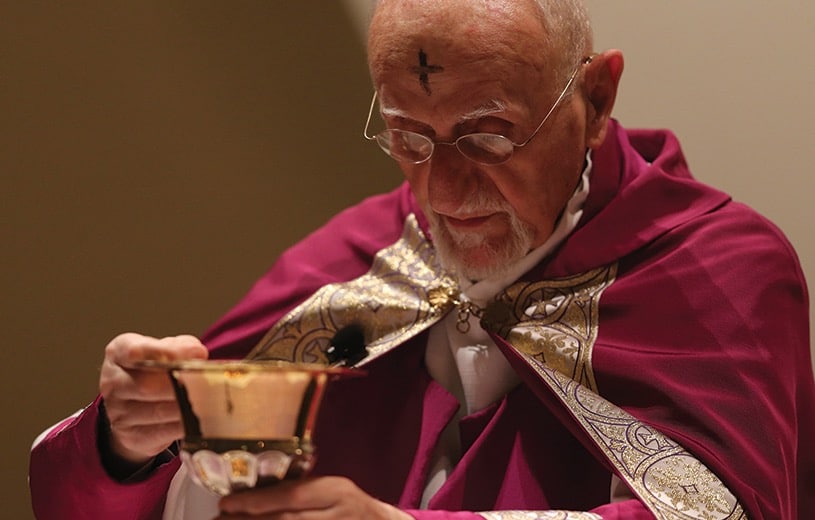
Struggle of identity
Bishop Gregory J. Mansour is the Eparch of Saint Maron of Brooklyn, and has been since January 2004. Born in Flint, Michigan, in 1955, he was ordained a priest in 1982. While his father and mother were both born in the United States, their parents were from Nazareth, Damascus and southern Lebanon. They left their countries of origin and came here to escape persecution at the hands of the Ottoman Empire.
Bishop Mansour’s vocation story reflects common themes among many Maronites in this country, particularly the struggle of identity in such a small religious community, but with the truth, beauty and goodness ever calling out.
“I was inspired by young men my age who had a great personal devotion to Jesus Christ,” he said. In his college years, two young evangelical men witnessed to him the saving grace of Jesus Christ, which caused him to repent of his sins and be born again. “But by another miracle, I was led back to my Catholic upbringing by a priest who served the Maronite community in Flint,” he recalled.
Maronite parishes in the United States tend to be much smaller than Roman Catholic parishes, with only about 200-700 families. This allows the communities to be very closely knit with each other and the priest. Additionally, the Syriac roots “give Maronites a unique liturgical life that looks like the culture of Jesus,” Bishop Mansour said.
Bishop Mansour has seen firsthand the toll that conflicts in the Middle East have on the Maronite community, including bringing influxes of refugees to the United States. “The war in Lebanon in 1975 to 1990 was a terrible scourge, and we had a great influx of Maronites here,” he said. “The Syrian war — now 8 years — has sadly enough had a similar effect.”
Maronites, he added, will always work with all their heart to serve refugees, because “we were once refugees ourselves.”
Paul Senz writes from Oregon.

